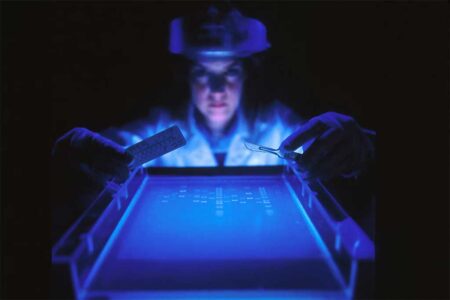Machine vision sounds pretty high-tech, but the idea is actually simple. Teaching computers to understand what they see, whether it’s a photo, a video, or something right in front of them. Instead of just recording an image, the system breaks it down and figures out what it’s looking at. It’s not just seeing, it’s recognizing, sorting, and sometimes even reacting.

It’s Already Incorporated Into Daily Routines
Quietly driving much of what you interact with daily. Retailers employ it to keep inventory in its rightful place. Farmers depend upon it to identify plant problems before they’re large. Reading tools recite scenes aloud to those who require that assistance. Recycling facilities sort more quickly with fewer errors. It is an unseen presence that continues to keep work chugging along.
Behavior Meets Tech As People Actually Experience
This technology enables teams to get a grip on real behavior without assumptions. A stadium can examine foot traffic to minimize bottlenecks. A chain grocery can identify where interest falls off and correct a garish layout. City planners can monitor how crossings are used and restructure to make it safer. This is not about surveilling people. This is about enhancing the experience that people have through those spaces.
When Machines Learn To Play
Following is space for entertainment. Somebody has to have stood up and thought that making all this time it saves into real value would be a good thing.
You would have to ask yourself if this kind of tech is exclusively developers and engineers’ business, but that is really far from true. Think about how much time teams spend redoing tasks time and time again. If an absolute system just so happens to have a clue as to what it is looking at and does something automatically? That is a decent time-saver.
There is also that consistency factor. An AI once trained will never tire of it, will never be distracted from it, will never bore it. It will just do it again and again and again, just like it did when it was originally trained. Accuracy is high all the time, and no human error will infiltrate it. Such reliability is hard to beat, seemingly irrelevant. But just think of all that would be done to casino security alone, or to virtual games of cards, or even psychological studies. Someone has already trained an AI to recognize playing cards, and while that sounds playful, it’s a sharp example of machine vision used in a unique and very real-world setting.
Tech That’s Quietly Getting Smarter
Part of why this technology is spreading so quickly is that it doesn’t make you feel weighed down. You can have a small group of people train a model with open-source tools, plug it into a minimal setup, and have it quietly sit in the background. And once it’s set up and running quietly in the background, it learns. It gets better. It begins to pick up on the things that you want it to pick up on, and stops alerting you to things that you don’t.
More Substantial Than Shiny
Of course, no system is without flaws. Machine vision is only as good as what is fed into it, and it requires human input to remain accurate and just. But when used judiciously, it provides a sheer volume of understanding that would be untrackable by hand. It’s not only monitoring, it’s learning, adjusting, and improving quietly behind the scenes.





